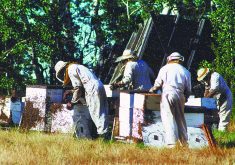WINNIPEG — In theory, Canadian acres of industrial hemp should increase in 2024.
Canola prices have dropped this winter to around $13 per bushel, so there could be opportunity for an alternative crop like hemp to grab some acres.
Related story: Hemp sector sees success in hybrid varieties
Read Also

Fertilizer method’s link to emissions studied
A researcher says others studying greenhouse gas emissions aren’t considering how the loss of nitrogen into the atmosphere correlates with fertilizer application or if there is an impact to yield.
During the winter, production contracts were around 70 to 75 cents per pound for conventional hemp and about $1.50 for organic hemp.
If a farmer could achieve conventional yields of 900 lb. per acre, the gross income would be $630 to $675 per acre, which is competitive with canola.
However, few farmers will return to hemp or choose hemp over canola in 2024. A modest increase in production near fibre processing plants in Alberta is possible, but an acreage jump for hemp seems unlikely, says a leader in Canada’s hemp industry.
“I think it (acreage) is fairly static right now,” said Russ Crawford, former president of the Canadian Hemp Trade Alliance, who now works as a consultant.
The last several years have seen a downturn in Canadian hemp production. Licensed acres of industrial hemp, which is regulated and tracked by Health Canada, dropped from 91,000 acres in 2019 to 34,000 in 2022.
Last year Statistics Canada estimated about 54,000 acres of hemp in the country, but figures for small acreage crops tend to be unreliable.
Acres are unlikely to jump in 2024 because industry has learned from previous mistakes, Crawford said.
Twice in the last decade, the hemp industry overestimated demand and Canadian farmers produced an excessive supply. Stockpiles remained on-farm or sat in bins at processing plants for a year or two as manufacturers worked through the glut.
Leading hemp food companies like Manitoba Harvest now carefully manage contacted production to prevent oversupply.
Clarence Shwaluk, director of farm operations with Manitoba Harvest, said in January that growers have shown more enthusiasm for hemp this winter but contracted production will likely be similar to previous years.


















